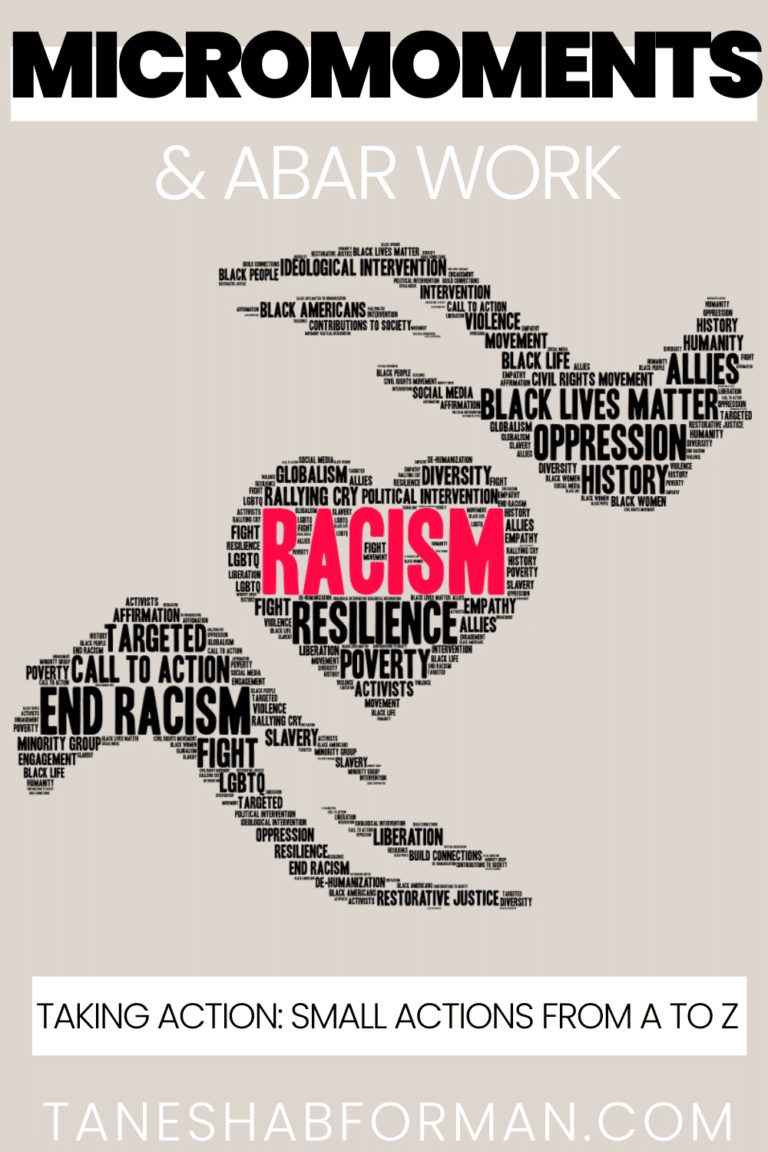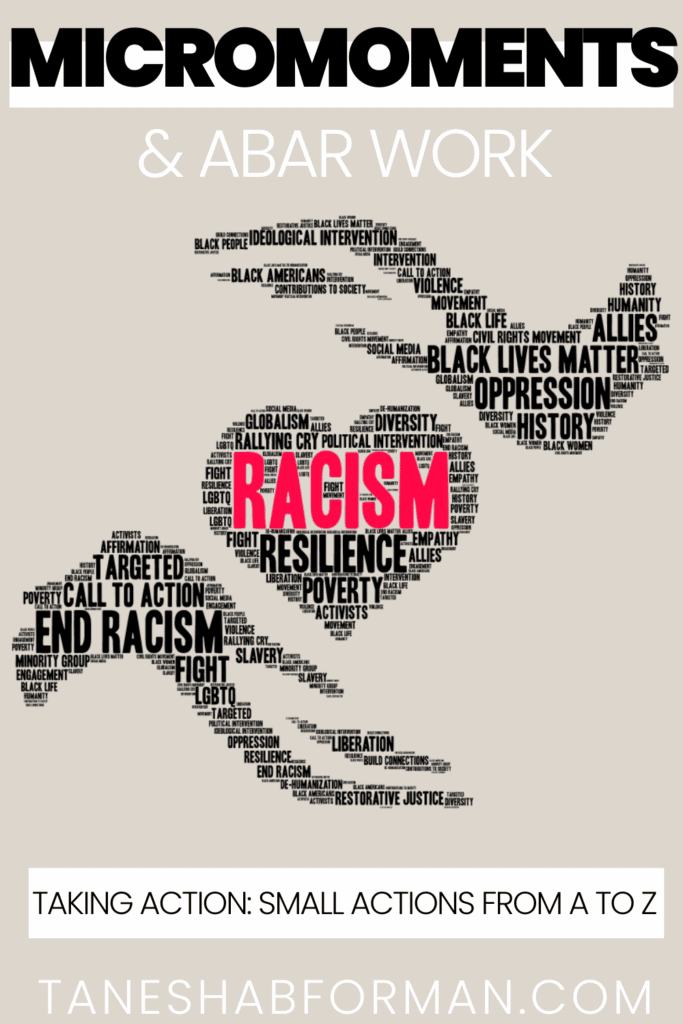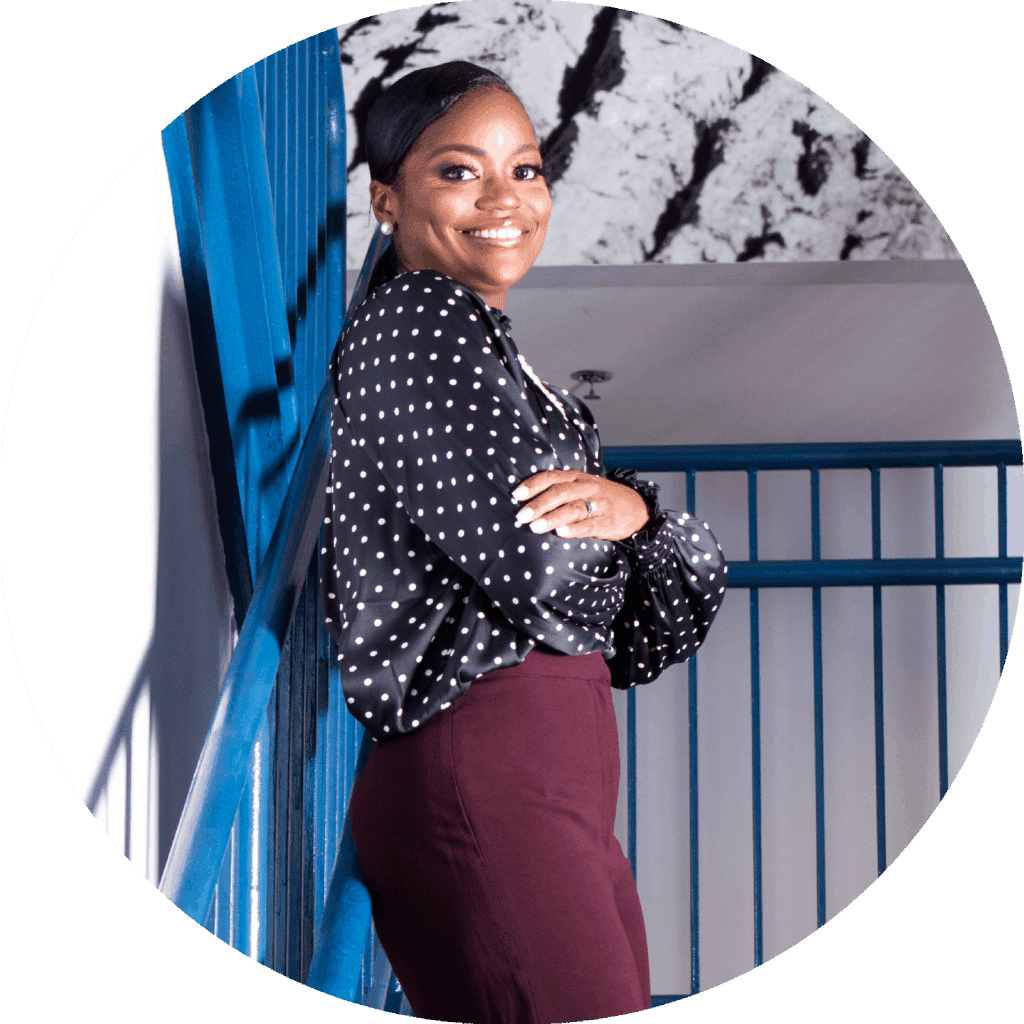
Menu

One question I often receive is “what are anti-bias and anti-racist actions I can take on a daily basis?” A great question, but I am no expert…who is? I am a teacher seeking to do better by my school community every time I step in front of students. That said, I get it wrong. I learn. I do better. Below is an A to Z (draft) list of actions that all teachers can take to make their classrooms more welcoming and inclusive spaces.
**Note: This list is not a checklist. It’s not intended to be used to say “I do that so my classroom is anti-bias and anti-racist.” The work is in ongoing learning, honest reflection, and direct action. It’s a belief in constantly questioning and challenging the status quo. I reserve the right to change my views as a evolve as a person.
If our first response to student behavior is to look for something punitive to do to kids, we are not looking for relationship. We are interested in regulation. No one likes to be controlled. – Tamara Russell (Mrs. Russell’s Room)
 |
| Example from Missing Tooth Grins |
 |
| Click here to see full the post |
It is not our differences that divide us. It is our inability to recognize, accept, and celebrate those differences. – Audre Lorde
 |
| Click here to read the full caption |
In a colorblind society, white people, who are unlikely to experience disadvantages due to race, can effectively ignore racism in American life, justify the current social order, and feel more comfortable with their relatively privileged standing in society (Fryberg, 2010).
Fryberg, S. M. (2010). When the World Is Colorblind, American Indians Are Invisible: A Diversity Science Approach. Psychological Inquiry, 21(2), 115-119.

Sign up and access the FREE resources to support your Anti-Bias/Anti-Racism journey.

I'm a current middle school administrator who loves breaking down complex topics and providing opportunities for educators learn, reflect, practice, and implement methods that foster equity and anti-racism. I believe we win together!


I’m a current middle school administrator who loves breaking down complex topics and providing opportunities for educators learn, reflect, practice, and implement methods that foster equity and anti-racism. I believe we win together!
©2020 Tanesha B. Forman.
All Rights Reserved.
Designed by Ashley Hughes.
2 thoughts on “A to Z Anti-bias/Anti-racist micro moments”
This was an awesome and insightful list. Thank you for sharing! I work with 7th grade students to explore their career interests through a program that connects students to various companies around our city. I recently taught a code-switching lesson to hold space for a conversation about entering different (mainly white) spaces and how this might feel. To add a little humor to the lesson, I started with a video by Key and Peele – specifically the skit where Peele plays Obama and greets his admirers differently. Throughout the skit, he daps up and greets people of color with more enthusiasm and comfort than he does the white people while switching effortlessly between the two. My students, who are mainly African-American, commented that they thought Peele was being racist. I tried to draw back to students’ own experiences – how they exhibit themselves differently in different environments like school and home, but I’m worried I ended up sending the wrong message. Any advice?